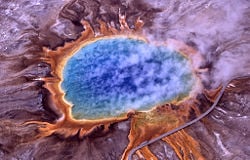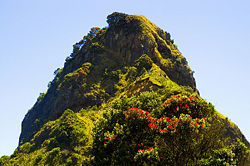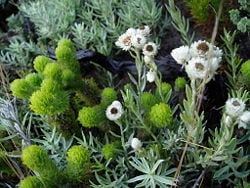Life
Life is the characteristic state of organisms and individual cells. This is how they thrive. Properties common to the known organisms found on Earth (plants, animals, fungi, protists, archaea and bacteria) are that they are carbon-and-water-based, are cellular with complex organization, undergo metabolism, possess a capacity to grow, respond to stimuli, reproduce and, through natural selection, adapt in succeeding generations.
An entity with the above properties is considered to be an organism. However, not every definition of life considers all of these properties to be essential. For example, the capacity for descent with modification is often taken as the only essential property of life. This definition notably includes viruses, which do not qualify under narrower definitions as they are acellular and do not metabolise. Broader definitions of life may also include theoretical non-carbon-based life and other alternative biology.
Although it cannot be pinpointed exactly, evidence suggests that life on Earth has existed for about 3.7 billion years [1]. Currently the entire Earth contains about 75 billion tons of biomass (life), which lives within various environments within the biosphere.[citation needed]
Definition by Opinion
Life itself is a set of processes that are carried out by an organism causing it to survive.
A conventional definition
Although there is no universal agreement on the definition of life, scientists generally accept that the biological manifestation of life exhibits the following phenomena:
- Homeostasis: Regulation of the internal environment to maintain a constant state; for example, sweating to cool off.
- Organization: Being composed of one or more cells, which are the basic units of life.
- Metabolism: Production of energy by converting nonliving material into cellular components (synthesis) and decomposing organic matter (catalysis). Living things require energy to maintain internal organization (homeostasis) and to produce the other phenomena associated with life.
- Growth: Maintenance of a higher rate of synthesis than catalysis. A growing organism increases in size in all of its parts, rather than simply accumulating matter. The particular species begins to multiply and expand as the evolution continues to flourish.
- Adaptation: The ability to change over a period of time in response to the environment. This ability is fundamental to the process of evolution and is determined by the organism's heredity as well as the composition of metabolized substances, and external factors present.
- Response to stimuli: A response can take many forms, from the contraction of a unicellular organism when touched to complex reactions involving all the senses of higher animals. A response is often expressed by motion, for example, the leaves of a plant turning toward the sun or an animal chasing its prey.
- Reproduction: The ability to produce new organisms. Reproduction can be the division of one cell to form two new cells. Usually the term is applied to the production of a new individual (either asexually, from a single parent organism, or sexually, from at least two differing parent organisms), although strictly speaking it also describes the production of new cells in the process of growth.
Addition of sung sang hyung sang aspect
See UT, p. 49, paragraph 2 and 3 Note from p. 48-52 of UT
Exceptions to the conventional definition
It is important to note that life is a definition that applies primarily at the level of species, so even though many individuals of any given species do not reproduce, possibly because they belong to specialized sterile castes (such as ant workers), these are still considered forms of life. One could say that the property of life is inherited; hence, sterile hybrid species such as the mule are considered life although not themselves capable of reproduction. It is also worth noting that non-reproducing individuals may still help the spread of their genes through such mechanisms as kin selection.
For similar reasons, viruses and aberrant prion proteins are often considered replicators rather than forms of life, a distinction warranted because they cannot reproduce without very specialized substrates such as host cells or proteins, respectively. However, most forms of life rely on foods produced by other species, or at least the specific chemistry of Earth's environment.
Some individuals contest such definitions of life on philosophical grounds, and offer the following as examples of life: viruses which reproduce; storms or flames which "grow"; certain computer software programs which are programmed to mutate and evolve; future software programs which may evince (even high-order) behavior; machines which can move; and some forms of proto-life consisting of metabolizing cells without the ability to reproduce. [citation needed]
Still, most scientists would not call such phenomena expressive of life. Generally all seven characteristics are required for a population to be considered a life form.
Other definitions
The systemic definition is that living things are self-organizing and autopoietic (self-producing). These objects are not to be confused with dissipative structures (e.g. fire).
Variations of this definition include Stuart Kauffman's definition of life as an autonomous agent or a multi-agent system capable of reproducing itself or themselves, and of completing at least one thermodynamic work cycle.
Another definition is: "Living things are systems that tend to respond to changes in their environment, and inside themselves, in such a way as to promote their own continuation."[citation needed]
Yet another definition: "Life is a self-organizing, cannibalistic system consisting of a population of replicators that are capable of mutation, around most of which homeostatic, metabolizing organisms evolve." This definition does not include flames, but does include worker ants, viruses and mules. Without 'most of', it does not include viruses.
Self reproduction and energy consumption is only one means for a system to promote its own continuation. This explains why bees can be alive and yet commit suicide in defending their hive. In this case the whole colony works as such a living system.
Origin of life

There is no truly "standard" model for the origin of life, but most currently accepted scientific models build in one way or another on the following discoveries, which are listed roughly in order of postulated emergence:
- Plausible pre-biotic conditions result in the creation of the basic small molecules of life. This was demonstrated in the Miller-Urey experiment.
- Phospholipids spontaneously form lipid bilayers, the basic structure of a cell membrane.
- Procedures for producing random RNA molecules can produce ribozymes, which are able to produce more of themselves under very specific conditions.
There are many different hypotheses regarding the path that might have been taken from simple organic molecules to protocells and metabolism. Many models fall into the "genes-first" category or the "metabolism-first" category, but a recent trend is the emergence of hybrid models that do not fit into either of these categories.[citation needed]
However, add info from from p. 48-52 of UT
The possibility of extraterrestrial life
- Main articles: Extraterrestrial life, Astrobiology
Earth is the only planet in the universe known to harbor life. The Drake equation has been used to estimate the probability of life elsewhere, but scientists disagree on many of the values of variables in this equation. Depending on those values, the equation may either suggest that life arises frequently or infrequently.
See also
- Artificial life
- Extraterrestrial life
- Cellular life
- Non-cellular life
- The Game of Life
- Conway's Game of Life
- Biological kingdom
- Origin of life
- Death
- Gaia hypothesis1
ReferencesISBN links support NWE through referral fees
- Kauffman, Stuart. The Adjacent Possible: A Talk with Stuart Kauffman. Retrieved Nov. 30, 2003 from [2]
- Guenther Witzany. Life:The Communicative Structure (2000). Libri Books on Demand. ISBN 3-8311-0349-6
- Lynn Margulis and Dorion Sagan - What Is Life? (1995). Simon & Schuster. ISBN 0-684-81087-5
- Erwin Schrodinger - What is Life? (1944 to 2000). Cambridge University Press (Canto). ISBN 0-521-42708-8
External links
- "In the Beginning..." (The Economist)
- "The Adjacent Possible: A Talk with Stuart Kauffman"
- Stanford Encyclopedia of Philosophy entry
- The Biologist: Biology
- Life under extreme conditions An in depth look at how life can form under the most extreme conditions.
- What is Life ? Life is the whole process which exists from birth to death and we have the result in us through what happened in ourselves.
Credits
New World Encyclopedia writers and editors rewrote and completed the Wikipedia article in accordance with New World Encyclopedia standards. This article abides by terms of the Creative Commons CC-by-sa 3.0 License (CC-by-sa), which may be used and disseminated with proper attribution. Credit is due under the terms of this license that can reference both the New World Encyclopedia contributors and the selfless volunteer contributors of the Wikimedia Foundation. To cite this article click here for a list of acceptable citing formats.The history of earlier contributions by wikipedians is accessible to researchers here:
The history of this article since it was imported to New World Encyclopedia:
Note: Some restrictions may apply to use of individual images which are separately licensed.



